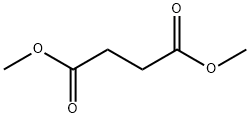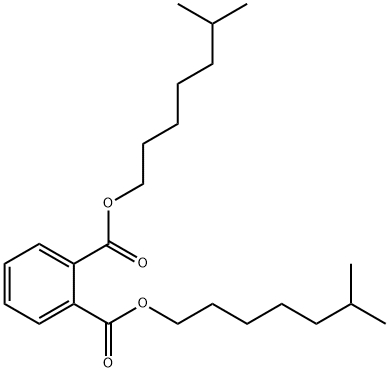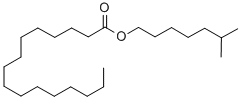2,4-D isooctyl ester
- CAS NO.:25168-26-7
- Empirical Formula: C16H22Cl2O3
- Molecular Weight: 333.25
- MDL number: MFCD00137356
- EINECS: 246-704-3
- SAFETY DATA SHEET (SDS)
- Update Date: 2023-04-23 13:52:06

What is 2,4-D isooctyl ester?
Chemical properties
2,4-Dichlorophenoxyacetic acid is a white to yellow crystalline powder with a slight phenolic odor.
The Uses of 2,4-D isooctyl ester
2,4-D isooctyl ester is a useful biochemical for proteomics research.
What are the applications of Application
2,4-D isooctyl ester is a useful biochemical for proteomics research
General Description
White crystals in commerce, a brown or dark brown liquid.
Air & Water Reactions
Insoluble in water.
Reactivity Profile
Esters react with acids to liberate heat along with alcohols and acids. Strong oxidizing acids may cause a vigorous reaction that is sufficiently exothermic to ignite the reaction products. Heat is also generated by the interaction of esters with caustic solutions. Flammable hydrogen is generated by mixing esters with alkali metals and hydrides.
Fire Hazard
2,4-D isooctyl ester is combustible.
Potential Exposure
2,4-Dichlorophenoxyacetic acid, was introduced as a plant growth-regulator in 1942. It is registered in the United States as a herbicide for control of broadleaf plants and as a plant growth-regulator. Thus, workers engaged in manufacture, formulation or application are affected, as may be citizens in areas of application. The Vietnam war era defoliant, Agent Orange, was a mixture of 2,4-D and 2,4,5-T.
Shipping
UN3345 Phenoxyacetic acid derivative pesticide, solid, toxic, Hazard Class: 6.1; Labels: 6.1-Poisonous materials. A DOT regulated marine pollutant.
Incompatibilities
A weak acid, incompatible with bases. Decomposes in sunlight or heat, forming hydrogen chloride and phosgene. Contact with strong oxidizers may cause fire and explosions.
Waste Disposal
Incineration of phenoxys is effective in 1 second @ 982 C, using a straight combustion process or @ 482℃ using catalytic combustion. Over 99% decomposition was reported when small amounts of 2,4-D were burned in a polyethylene bag. See “References” for additional detail. In accordance with 40CFR165, follow (31); recommendations for the disposal of pesticides and pesticide containers. Must be disposed properly by follow- ing (100) Package (2) label directions or by contacting your local or federal environmental control agency, or by contacting your regional EPA office. Consult with environ- mental regulatory agencies for guidance on acceptable disposal practices. Generators of waste containing this contaminant (≥100 kg/mo) must conform with EPA regu- lations governing storage, transportation, treatment, and waste disposal.
Properties of 2,4-D isooctyl ester
| Melting point: | 12°C |
| Boiling point: | 449.37°C (rough estimate) |
| Density | 1.1506 (rough estimate) |
| refractive index | 1.5810 (estimate) |
| Flash point: | 48°C |
| form | neat |
| Water Solubility | <0.1 g/100 mL at 21 ºC |
| CAS DataBase Reference | 25168-26-7(CAS DataBase Reference) |
| EPA Substance Registry System | 2,4-D isooctyl ester (25168-26-7) |
Safety information for 2,4-D isooctyl ester
| Signal word | Warning |
| Pictogram(s) |
 Exclamation Mark Irritant GHS07  Environment GHS09 |
| GHS Hazard Statements |
H302:Acute toxicity,oral H317:Sensitisation, Skin H410:Hazardous to the aquatic environment, long-term hazard |
| Precautionary Statement Codes |
P273:Avoid release to the environment. P280:Wear protective gloves/protective clothing/eye protection/face protection. P501:Dispose of contents/container to..… |
Computed Descriptors for 2,4-D isooctyl ester
New Products
4-AMINO-TETRAHYDRO-PYRAN-4-CARBOXYLIC ACID HCL 4-(Dimethylamino)tetrahydro-2H-pyran-4-carbonitrile 4-Aminotetrahydropyran-4-carbonitrile Hydrochloride (R)-3-Aminobutanenitrile Hydrochloride 3-((Dimethylamino)methyl)-5-methylhexan-2-one oxalate 1,4-Dioxa-8-azaspiro[4.5]decane 5-Bromo-2-nitropyridine Nimesulide BP Aceclofenac IP/BP/EP Diclofenac Sodium IP/BP/EP/USP Mefenamic Acid IP/BP/EP/USP Ornidazole IP Diclofenac Potassium THOMAIND PAPER PH 2.0 TO 4.5 1 BOX BUFFER CAPSULE PH 9.2 - 10 CAP SODIUM CHLORIDE 0.1N CVS ALLOXAN MONOHYDRATE 98% PLATINUM 0.5% ON 3 MM ALUMINA PELLETS (TYPE 73) LITHIUM AAS SOLUTION 2-Bromo-1-(bromomethyl)-3-chloro-5-nitrobenzene 2-Bromo-3-nitroaniline N-(3-Hydroxypropyl)-N-methylacetamide 3-Bromo-6-chloropyridazine 4-ethyl-3-nitrobenzoic acidRelated products of tetrahydrofuran








You may like
-
 1-Methyl-6-oxo-1,6-dihydropyridazine-3-carbonitrile 98%View Details
1-Methyl-6-oxo-1,6-dihydropyridazine-3-carbonitrile 98%View Details
99903-60-3 -
 88491-46-7 98%View Details
88491-46-7 98%View Details
88491-46-7 -
 1823368-42-8 98%View Details
1823368-42-8 98%View Details
1823368-42-8 -
 2-(3-(tert-butyl)phenoxy)-2-methylpropanoic acid 1307449-08-6 98%View Details
2-(3-(tert-butyl)phenoxy)-2-methylpropanoic acid 1307449-08-6 98%View Details
1307449-08-6 -
 Ethyl 3-(furan-2-yl)-3-hydroxypropanoate 25408-95-1 98%View Details
Ethyl 3-(furan-2-yl)-3-hydroxypropanoate 25408-95-1 98%View Details
25408-95-1 -
 2-Chloro-5-fluoro-1-methoxy-3-methylbenzene 98%View Details
2-Chloro-5-fluoro-1-methoxy-3-methylbenzene 98%View Details
1805639-70-6 -
 1784294-80-9 98%View Details
1784294-80-9 98%View Details
1784294-80-9 -
 Lithium ClavulanateView Details
Lithium ClavulanateView Details
61177-44-4